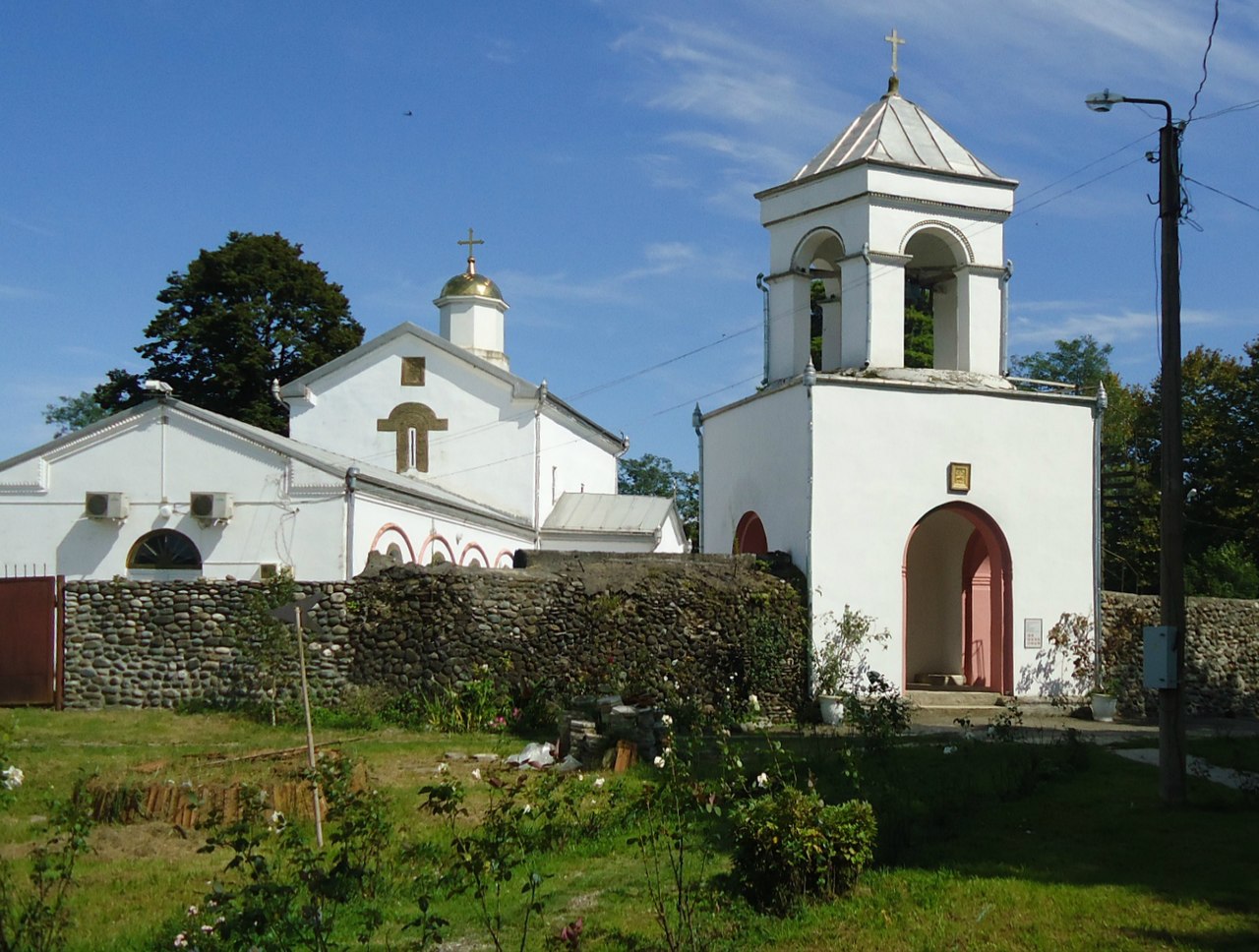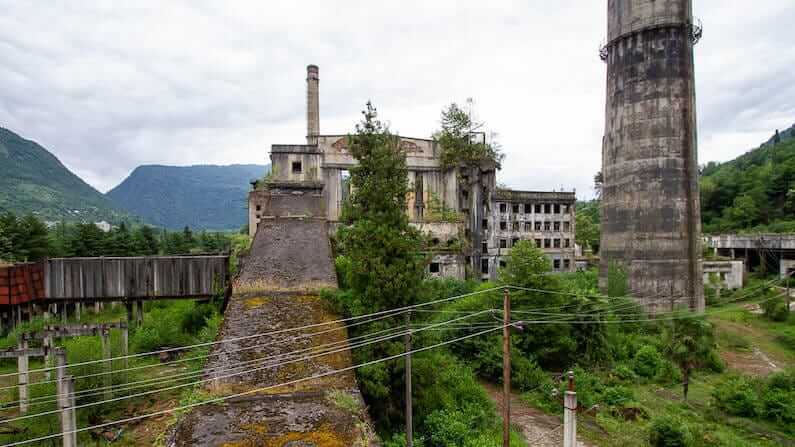 Ritsa Relict National Park (also known as in Abkhaz, რიწის დაცული ტერიტორია in Georgian, Национальный парк Рица Реликт in Russian) is a 311 km²
national park in the northern part of Abkhazia, close to the border
with Russia, whose main aim is protecting Lake Ritsa and the flora and
fauna in the surrounding mountainous region. The
landscape of the national park consists in mountain with different
heights, lakes of different sizes, glaciers, caves rivers and waterfalls. The national park has
also rich fauna and flore and is usually reached from Gagra. It's recomended to visit from April to October.
Ritsa Relict National Park (also known as in Abkhaz, რიწის დაცული ტერიტორია in Georgian, Национальный парк Рица Реликт in Russian) is a 311 km²
national park in the northern part of Abkhazia, close to the border
with Russia, whose main aim is protecting Lake Ritsa and the flora and
fauna in the surrounding mountainous region. The
landscape of the national park consists in mountain with different
heights, lakes of different sizes, glaciers, caves rivers and waterfalls. The national park has
also rich fauna and flore and is usually reached from Gagra. It's recomended to visit from April to October.
How do I arrive to Ritsa Relict National Park?
Ritsa Relict National Park is located in a quite uninhabited part of Abkhazia so there aren't many different means of transport to arrive here. - Bus:
there are marshrutkas from Gagra in summer season. It can also be hired a tour or a taxi to arrive to the park.
- Car: Ritsa National Park can be reached from different places like Gagra (aprox. 1 hour 15 minutes), Pitsunda (aprox. 1 hour 20 minutes), Gudauta (aprox. 1 hour 25 minutes), Novy Afon (aprox. 1 hour 40 minutes) or Sukhumi (aprox. 2 hours 5 minutes). It can also be reached from Adler or Sochi in Kranodar Krai (Russia).
Once
in the Park the best ways to move around the park are the car, with mountain bike or hiking.
History
In 1930 it was established Ritsinsky Reserve under the Soviet Union and when Georgia reestablished its independence (1991), the territory of the reserve was enlarged and the modern Ritsa Strict Nature Reserve established. With the outbreak of Abkhaz-Georgian conflict and subsequent war, the control is exercised by the de facto Government of Abkhazia, which established the Ritsa Relict National Park here in 1996.
What can I visit in Ritsa Relict National Park?
The National Park is one of the most worthy sightseeing points not only in Abkhazia, but in the whole area. It's also highly recommended to hire a guide to take the visitor to the lake and make stops because its infrastructure is quite bad preserved. Most of the attractions of the park are located along the only road to Ritsa Lake. To enter into the national park the visitor has to pay a fee (350₽/ 150₽/ free adults/ kids under 12/ kids under 8):
-
 |
Gega Waterfall
|
On the way to the national park the visitor can stop at the small Goluboye Lake (Blue Lake), a nice lake of kartic origin known for its turquoise water (given by azurite mineral).- Walking 7 km from the main road (there's a mountain road to it but is in terrible condition) it can be found Gega Waterfall, also known as Circassian Waterfall. This 70 m high waterfall on river Gega (tributary of the Bzyb River), with water with a high lever of purity, is very popular among tourists (considered the most famous and beautiful waterfall of Abkhazia). The Soviet film The Adventures of Sherlock Holmes and Dr. Watson
and many Georgian films had scenes filmed here. Next to it there's a
grotto (formed by the exit of water from the side crevices) and a karst
cave, Gega Waterfall Cave.
- Continuing by the road to Lake Ritsa the visitor can stop at another nice waterfall, Muzhskiye Slezy Waterfall (translated as Men's Tears Waterfall), connected with the legend of Maiden Tears' Waterfalls.
 |
Yupshar Canyon
|
Souvenirs
and ribbons are sold at its foot (tributing the tourist tradition of
tying ribbons near the waterfall and making wishes). - Keeping driving the visitor can enter into Yupshar Canyon, an incredible 8 km long gorge formed along river Yupshar by being washed during millions of years of water action. Its walls overhang the road and river and the width of the gorge ranges from 100 m to 20 m. Usually tourists make a short stop (5 minutes) on one of the viewing platforms to take pictures.
- Very close to the lake it can be enjoyed the views from Proshchay, Rodina Observation Deck. This place is called that way (translated like Goodbye, Motherland) because in the 1930s, during the construction of Stalins's dacha, one truck fell down from the lacet and as the truck was falling, the driver cried it. There's later another viewpoint, Lake Ritsa Observation Deck.
 |
Lake Ritsa
|
The main sightseeing point in the national park is Lake Ritsa, a wonderful lake with cold and clear water. During the Soviet times it was an important tourist attraction and it's still frequented by Russian tourists, although the infrastructure seems to be locked in the Soviet years. The lake is surrounded by mixed mountain forests and subalpine meadows, and many activities can be done here such as walk around the lake, boating or enjoy the cafes located by the lake. The lake is one of the must-visit of Abkhazia and the whole region. Here it can be visited Stalin's Dacha at Lake Ritsa (9-18; 150₽), one of the many summer residences that Josef Stalin had (believed to have been one of his favorites) |
Stalin's Dacha at Lake Ritsa
|
built in 1947 as a simple-looking house using rare and precious wood. To ensure the electricity for the cottage and the associated builgins, it was built a small hydroelectric power plant. In the visit it's told the life of the leader, his character, habits and interesting things that don't appear in history books. Next to it there's also Khrushchev's Dacha at Lake Ritsa. - There are some trails that begin in Lake Ritsa like Stalin's Dacha-Malaya Ritsa Lake Trail (9.7 km), a trail that connects both sites and goes by lake Ritsa, or Lake Ritsa-Pskhu Route (52.2 km), a 2-day long demanding route that connects lake Ritsa with Pskhu, the 2nd most important town in Sukhumi District (the visitor can enjoy some rest at Refuge Ankhor).
 |
Malaya Ritsa Lake
|
Another interesting trail is Pshegishkhva Trail (9.1 km), trail that reaches Pshegishkhva (2216
m), going before by a ridge and an area of snow (even in summer). There are awesome views from here and it can even be distinguished the Black Sea. Most of
the trails in the national park aren't very well indicated so the
visitor has to be careful. - Some of the previously mentioned trails also arrive to Malaya Ritsa Lake, also known as Smaller Ritsa Lake, a much smaller lake but also much more natural becuase it has no infrastructure and has fascinating views of the mountains like Pshegishkhva. It's sometimes considered to be more beautiful than Lake Ritsa.
 |
Molochnyy Falls
|
- By lake Ritsa there are other interesting places. One of them is Ptichiy Klyuv Viewpoint, a place with beautiful views of the lake that has a quite picturesque and beautiful waterfall. Another one are Molochnyy Falls, river waterfall that flows into the lake. Its water has the optical effect of seeming white (therefore the name of Milk Falls) because it has several rapids and its water is very cold (although it's said that swimming on it preserves youth)
- Keeping on the road, getting deeper into the mountains, there's the Base Adjara, from where starting Mount Atsetuka Trail (13.5 km). This difficult trail reaches that reaches Mount Atsetuka (2539 m high)
 |
Mount Atsetuka
|
and that provides nice views of Mzi Lake and the rest of the lakes of the National Park. From it there are also views of another important mountain, Mount Kutykukh.
- Not far there's Avadjara, a mountain village and climatological resort on the southwestern slopes of the Avadhara Range at an elevation of 1600 m. Mineral water comes out from local springs, with a similar chemical composition to Essentuki and Borjomi, and there's accomodation available too.
- Other trail that is interesting to do is Lake Mzy and Waterfalls Trail (8.9 km), a trail that goes to Lake Mzy by Avadhara river, passing through forest and green alpine meadows.
 |
Lake Mzy
|
The trail reaches Lake Mzy, one of the most picturesque lakes of Abkhazia becuase the lake is surrounded by mountains. It's located at an altitude of 2000 m high and its water comes from melting glaciers (therefore its water is very cold). Another available route is Mount Adjara Trail (6.3 km), that climbes Mount Adjara (2905 m high). - Further from the main part of the national park the visitor can arrive to the Valley of Seven Lakes. This is a beautiful plateau over 2000 meters with several beautiful mountain lakes (in fact there are more than 7) formed by melt water from mountain snowcaps and rain. Arriving in the valley on a mountain trail provide great views of still pristine nature like alpine meadows, lakes and Caucasus mountains.
Where can I eat in Ritsa Relict National Park?
There aren't many places where to eat in the park so it's better to take food from outside (or eating in the places available in the park, although they aren't cheap).
 Ritsa Relict National Park (also known as in Abkhaz, რიწის დაცული ტერიტორია in Georgian, Национальный парк Рица Реликт in Russian) is a 311 km²
national park in the northern part of Abkhazia, close to the border
with Russia, whose main aim is protecting Lake Ritsa and the flora and
fauna in the surrounding mountainous region. The
landscape of the national park consists in mountain with different
heights, lakes of different sizes, glaciers, caves rivers and waterfalls. The national park has
also rich fauna and flore and is usually reached from Gagra. It's recomended to visit from April to October.
Ritsa Relict National Park (also known as in Abkhaz, რიწის დაცული ტერიტორია in Georgian, Национальный парк Рица Реликт in Russian) is a 311 km²
national park in the northern part of Abkhazia, close to the border
with Russia, whose main aim is protecting Lake Ritsa and the flora and
fauna in the surrounding mountainous region. The
landscape of the national park consists in mountain with different
heights, lakes of different sizes, glaciers, caves rivers and waterfalls. The national park has
also rich fauna and flore and is usually reached from Gagra. It's recomended to visit from April to October. 










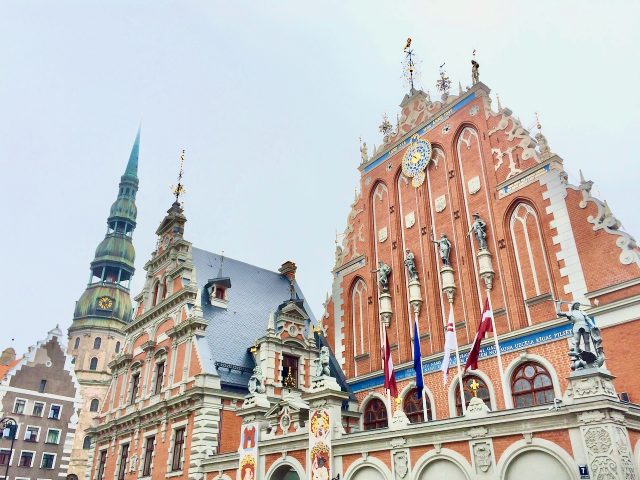

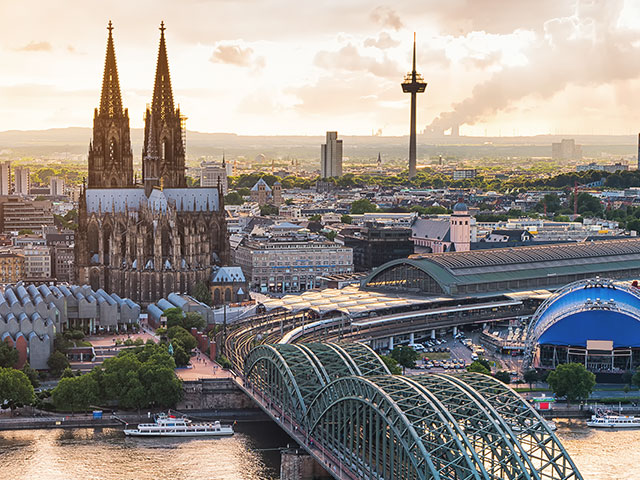


 23:40
23:40
 Banknotemaniac
Banknotemaniac
 Posted in:
Posted in: 
.jpg/1280px-2014_Suchum%2C_Sob%C3%B3r_Zwiastowania_(01).jpg)



.jpg/1920px-2014_Suchum%2C_Nabrze%C5%BCe_(01).jpg)
.jpg/1280px-2014_Suchum%2C_Pozosta%C5%82o%C5%9Bci_zamku_Bagrata_(02).jpg)

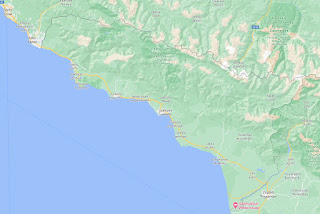

-en.svg/1024px-Georgian_States_Colchis_and_Iberia_(600-150BC)-en.svg.png)



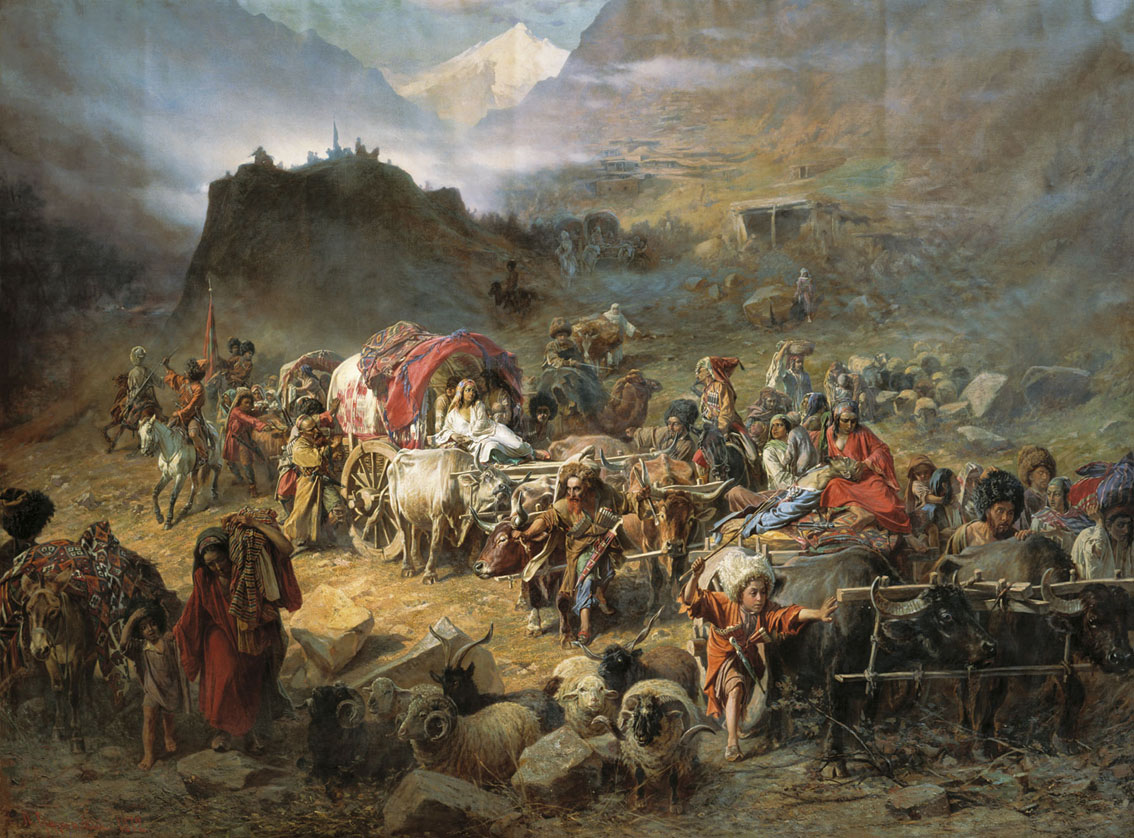
.svg/1280px-Democratic_Republic_of_Georgia_(en).svg.png)
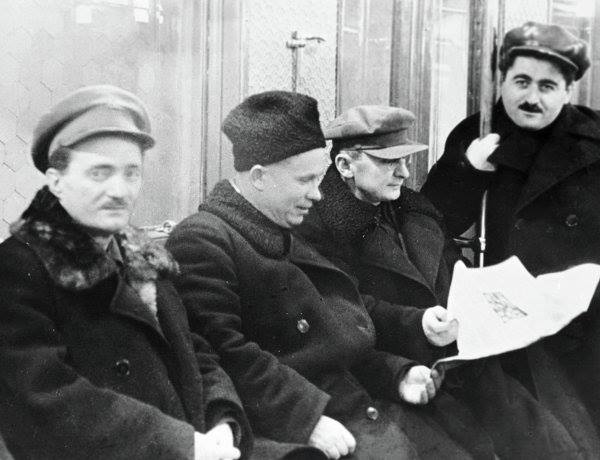




.jpg/1920px-2014_Nowy_Aton%2C_Monaster_Nowy_Athos_(06).jpg)

.jpg/1280px-2014_Nowy_Aton%2C_Cerkiew_%C5%9Bw._Szymona_Aposto%C5%82a_(06).jpg)


.jpg/1280px-New_Athos_cave_(3338661608).jpg)
.jpg/1280px-2014_Nowy_Aton%2C_Twierdza_Anakopia_(01).jpg)



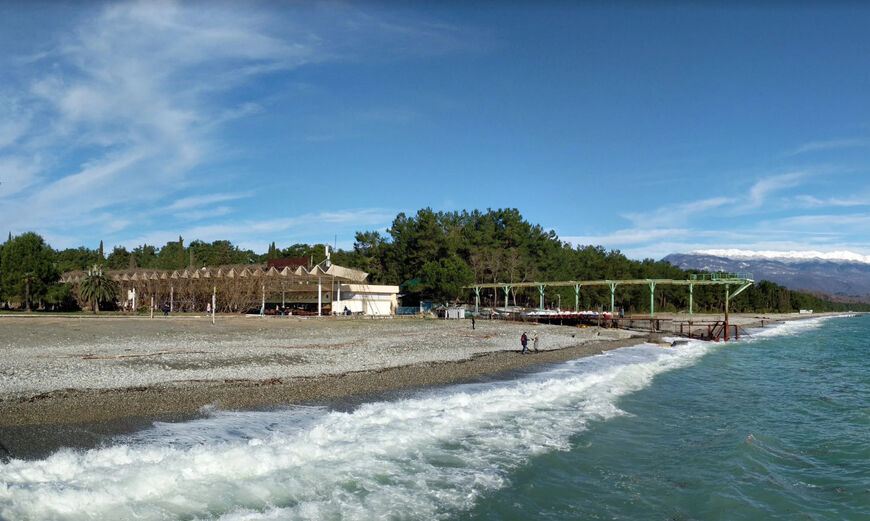

.jpg/1280px-2014_Picunda%2C_Sob%C3%B3r_%C5%9Bw._Andrzeja_(07).jpg)
.jpg)










